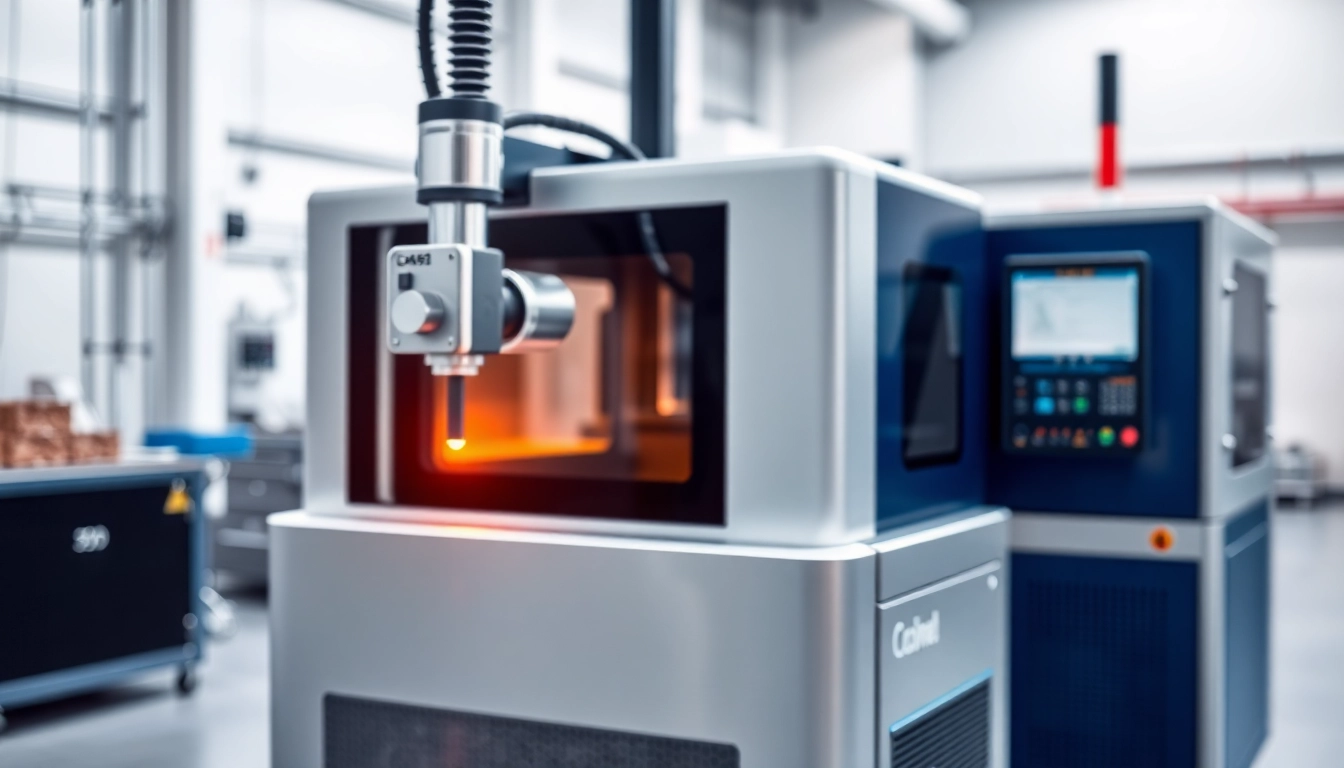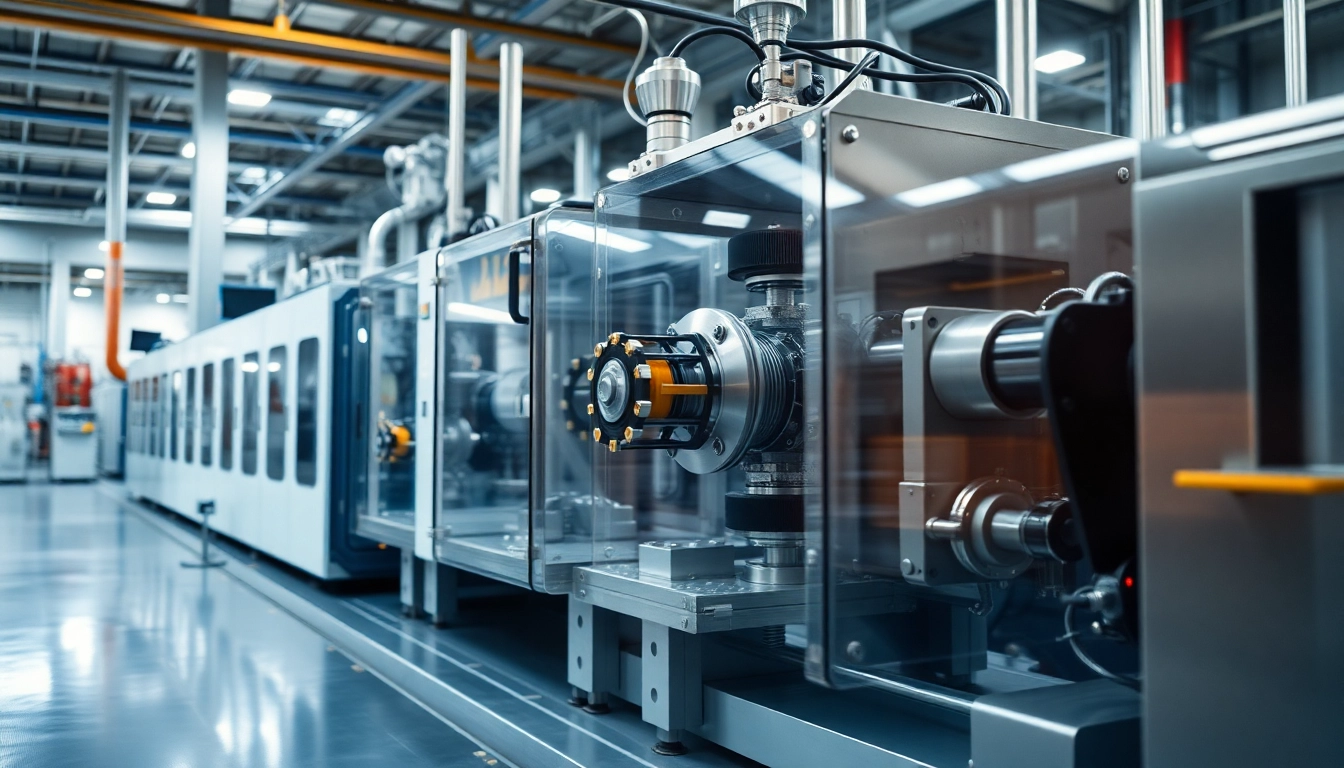Understanding the Basics of Laser Cleaning Machine
What is Laser Cleaning Machine?
A Laser cleaning machine is an advanced technology that utilizes high-intensity laser beams to effectively remove contaminants from various surfaces. This machine is capable of cleaning a wide range of materials, including metals, plastics, and even masonry. The process is non-abrasive and environmentally friendly, making it an increasingly popular choice for industries looking to maintain and restore the integrity of materials while minimizing environmental impact. By focusing on targeted areas, a Laser cleaning machine can remove rust, paint, grime, and other unwanted substances without damaging the underlying surface.
How Laser Cleaning Machine Works
The working principle of a laser cleaning machine involves directing a concentrated laser beam onto the surface to be cleaned. As the laser light hits the contaminants, it generates heat, causing the contaminants to evaporate or be blown away by the reaction gases produced. This process occurs incredibly quickly, allowing for efficient cleaning without the need for harsh chemicals or abrasive materials. The process can be finely adjusted for different types of materials and contaminants, making it adaptable to various cleaning scenarios.
Applications of Laser Cleaning Machine
Laser cleaning machines are utilized in a variety of settings across multiple industries. Key applications include:
- Industrial Maintenance: Regular cleaning of machinery parts can prevent breakdowns and extend the lifespan of equipment.
- Restoration Projects: In art restoration and historical preservation, laser cleaning effectively removes dirt and old paints without damaging the original surfaces.
- Automotive Sector: Removing paint and rust from vehicle surfaces allows for more efficient repairs and maintenance.
- Shipbuilding and Maintenance: Laser cleaning can remove marine growth and corrosion from vessels, improving performance and longevity.
Benefits of Laser Cleaning Machine in Industry
Efficiency and Speed with Laser Cleaning Machine
One of the most significant advantages of the laser cleaning machine is its efficiency. The process is typically much quicker than traditional cleaning methods, such as sandblasting or chemical cleaning. This rapid cleaning process can save valuable time in industrial operations, leading to lower labor costs and reduced downtime. Moreover, the ability to focus the laser beam on specific areas also results in less waste, as surfaces are cleaned with precision.
Cost-Effectiveness of Laser Cleaning Machine
Though the initial investment in laser cleaning technology can be substantial, the long-term cost savings are noteworthy. Avoiding the use of disposables and hazardous materials reduces ongoing costs significantly. Additionally, because the cleaning process is faster, companies can allocate resources more efficiently, leading to increased productivity. Over time, the return on investment from a laser cleaning machine can surpass that of many conventional cleaning systems.
Environmental Considerations of Laser Cleaning Machine
With increasing environmental concerns, industries are seeking cleaner cleaning solutions. Laser cleaning machines offer a sustainable alternative as they do not require chemical agents, thus minimizing harmful emissions and waste. Furthermore, laser systems are designed to reduce noise and environmental pollutants, contributing to a healthier workplace.
Choosing the Right Laser Cleaning Machine
Key Features to Look For in Laser Cleaning Machine
When selecting a laser cleaning machine, it’s essential to consider various factors that contribute to its effectiveness and versatility. Key features include:
- Laser Power: Higher power ratings generally enable faster cleaning of heavier contaminants.
- Operating Modes: Look for machines that offer multiple operating modes to handle different surfaces and contamination types.
- Portability: Depending on your cleaning needs, choose between stationary and portable machines for flexibility.
- User-Friendly Interface: An intuitive control system can greatly enhance the cleaning experience and reduce training time.
Common Mistakes When Selecting Laser Cleaning Machine
Choosing the wrong laser cleaning machine can lead to ineffective cleaning and unnecessary expenses. Common mistakes include:
- Not assessing the types of materials to be cleaned, which can lead to selecting a machine ill-suited for the application.
- Overlooking the total cost of ownership, including maintenance and operational expenses.
- Ignoring support and service options, which are crucial for ensuring long-term functionality.
Comparing Different Types of Laser Cleaning Machine
Not all laser cleaning machines are created equal. Here are several types to consider:
- Fiber Lasers: Known for their efficiency and compact size, fiber lasers are suitable for most metal cleaning tasks.
- CO2 Lasers: CO2 lasers work well on non-metal materials and are commonly used in art restoration.
- Direct Diode Lasers: These provide high peak powers and are effective for industrial cleaning tasks with minimal thermal effects.
Best Practices for Using Laser Cleaning Machine
Safety Protocols for Operating Laser Cleaning Machine
Safety is paramount when operating laser cleaning machines to prevent accidents and injuries. Recommended protocols include:
- Wearing appropriate personal protective equipment (PPE), including laser safety goggles and protective clothing.
- Implementing safety interlocks and emergency shut-off controls to minimize risks.
- Conducting regular training sessions for operators to ensure they are familiar with the equipment and safety protocols.
Maintenance Tips for Laser Cleaning Machine
Regular maintenance of your laser cleaning machine is crucial to ensure its longevity and optimal performance. Key maintenance practices include:
- Conducting routine inspections to identify any potential issues before they escalate.
- Cleaning optical components regularly to prevent performance degradation.
- Following the manufacturer’s guidelines for servicing and parts replacement.
Optimizing Performance of Laser Cleaning Machine
To yield the best results from a laser cleaning machine, consider the following optimization strategies:
- Adjusting the laser parameters (power, speed, and frequency) according to the specific contaminant and material type.
- Utilizing focused cleaning techniques to increase efficiency while reducing the risk of damaging the substrate.
- Reevaluating cleaning applications regularly to assess and improve the cleaning strategy.
Future Trends in Laser Cleaning Machine Technology
Innovations in Laser Cleaning Machine
The future of laser cleaning technology is promising, with ongoing innovations aimed at enhancing the effectiveness and efficiency of the machines. One significant trend is the development of hybrid systems that combine laser cleaning with other technologies, such as robotics and automated systems, to streamline processes further.
Impact of AI on Laser Cleaning Machine Development
Artificial Intelligence (AI) is set to play a transformative role in laser cleaning technology. Future laser cleaning machines may incorporate AI for real-time monitoring, enabling autonomous adjustments to optimize cleaning effectiveness continually. Additionally, predictive maintenance models based on AI can forecast potential issues before they arise, minimizing downtime and enhancing operational efficiency.
Industry Predictions for Laser Cleaning Machine Use
As industries continuously strive for sustainability and efficiency, the adoption of laser cleaning machines is expected to increase in myriad sectors. Predictions suggest a growing reliance on this technology, especially in sectors such as manufacturing, construction, and conservation, leading to greater advancements and integrations with advanced technologies like IoT and automation. The future landscape of laser cleaning is not just about cleaning; it’s about smart, efficient, and sustainable cleaning processes.



